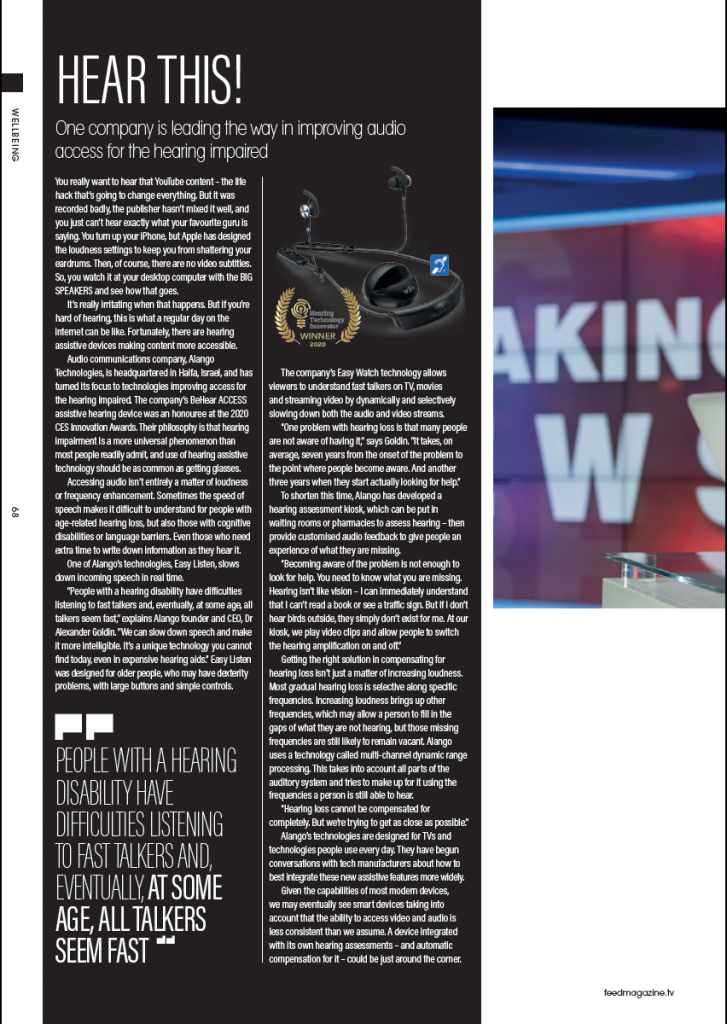HEAR THIS! One company is leading the way in improving audio access for the hearing impaired
[Originally published in FeedMagazine.tv – Spring 2021]
You really want to hear that YouTube content – the life hack that’s going to change everything. But it was recorded badly, the publisher hasn’t mixed it well, and you just can’t hear exactly what your favourite guru is saying. You turn up your iPhone, but Apple has designed the loudness settings to keep you from shattering your eardrums. Then, of course, there are no video subtitles. So, you watch it at your desktop computer with the BIG SPEAKERS and see how that goes.
It’s really irritating when that happens. But if you’re hard of hearing, this is what a regular day on the internet can be like. Fortunately, there are hearing assistive devices making content more accessible.
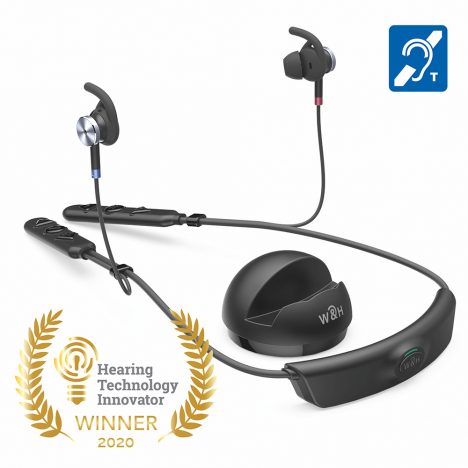
Audio communications company, Alango Technologies, is headquartered in Haifa, Israel, and has turned its focus to technologies improving access for the hearing impaired. The company’s BeHear ACCESS assistive hearing device was an honouree at the 2020 CES Innovation Awards. Their philosophy is that hearing impairment is a more universal phenomenon than most people readily admit, and use of hearing assistive technology should be as common as getting glasses.
Accessing audio isn’t entirely a matter of loudness or frequency enhancement. Sometimes the speed of speech makes it difficult to understand for people with age-related hearing loss, but also those with cognitive disabilities or language barriers. Even those who need extra time to write down information as they hear it.
One of Alango’s technologies, EasyListen, slows down incoming speech in real time.
“People with a hearing disability have difficulties listening to fast talkers and, eventually, at some age, all talkers seem fast,” explains Alango founder and CEO, Dr Alexander Goldin. “We can slow down speech and make it more intelligible. It’s a unique technology you cannot find today, even in expensive hearing aids.” BeHear ACCESS was designed for older people, who may have dexterity problems, with large buttons and simple controls.
The company’s EasyWatch technology allows viewers to understand fast talkers on TV, movies and streaming video by dynamically and selectively slowing down both the audio and video streams.
“One problem with hearing loss is that many people are not aware of having it,” says Goldin. “It takes, on average, seven years from the onset of the problem to the point where people become aware. And another three years when they start actually looking for help.”
To shorten this time, Alango has developed a hearing assessment kiosk, which can be put in waiting rooms or pharmacies to assess hearing – then provide customised audio feedback to give people an experience of what they are missing.
“Becoming aware of the problem is not enough to look for help. You need to know what you are missing. Hearing isn’t like vision – I can immediately understand that I can’t read a book or see a traffic sign. But if I don’t hear birds outside, they simply don’t exist for me. At our kiosk, we play video clips and allow people to switch the hearing amplification on and off.”
Getting the right solution in compensating for hearing loss isn’t just a matter of increasing loudness. Most gradual hearing loss is selective along specific frequencies. Increasing loudness brings up other frequencies, which may allow a person to fill in the gaps of what they are not hearing, but those missing frequencies are still likely to remain vacant. Alango uses a technology called multi-channel dynamic range processing. This takes into account all parts of the auditory system and tries to make up for it using the frequencies a person is still able to hear.
“Hearing loss cannot be compensated for completely. But we’re trying to get as close as possible.”
Alango’s technologies are designed for TVs and technologies people use every day. They have begun conversations with tech manufacturers about how to best integrate these new assistive features more widely.
Given the capabilities of most modern devices, we may eventually see smart devices taking into account that the ability to access video and audio is less consistent than we assume. A device integrated with its own hearing assessments – and automatic compensation for it – could be just around the corner.
PEOPLE WITH A HEARING DISABILITY HAVE DIFFICULTIES LISTENING TO FAST TALKERS AND, EVENTUALLY, AT SOME AGE, ALL TALKERS SEEM FAST
View the original article at https://online.bright-publishing.com/view/528237499/68/
Do You Think Your Hearing is Fine?
If you are between the ages of 20 and 69 – you probably suffer from hearing loss. But there is good news – you can check it by yourself and do something about it.
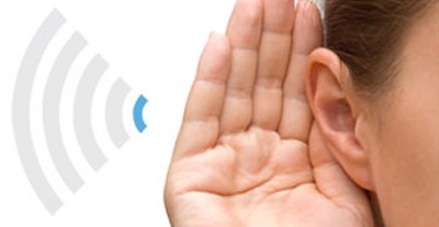
If you think your hearing is fine, think again. A federal study reports that about a quarter of the people between the ages of 20 and 69 who think their hearing is “good” or “excellent” are in fact showing signs of hearing loss.
Hearing loss is often attributed to noisy work environments, or to aging. The Centers for Disease Control and Prevention (CDC) reports that 24 percent of hearing loss is due to loud workplaces.
What surprised us was we found many people with evidence of noise-induced hearing damage who don’t have noisy jobs, who got that damage from their home or community.
Dr. Ann Schuchat, acting director of the CDC
Loud noises – from sirens to lawnmowers and rock concerts to sporting events – can permanently damage hearing. That damage builds up over time, and once it’s lost, it’s lost forever.
The study finds that the loss often starts early in life. Approximately 20 percent of Americans in their 20s have lost some ability to hear the softest sounds. The effect is much more pronounced in men than in women. And a quarter of people who have lost some hearing don’t even know it.
Hearing loss is especially problematic for older adults, who can find themselves socially isolated when they can’t hear what people around them are saying.
The CDC also notes that chronic exposure to noise has been associated with increased stress, anxiety, depression, high blood pressure, heart disease, distractability, and annoyance.
Bottom line: It’s best not to assume that your hearing is fine. The good news is it’s very simple to check it by yourself. There is a built-in hearing assessment in the BeHear NOW personalizable hearing amplifier (which also looks and functions just like a Bluetooth headset). With our 30-day “Buy & Try” return policy, you have nothing to lose. And with our upcoming “Black Friday” special offers there is no time like the present to do something about it!
How to Know if BeHear NOW Suits Your Level of Hearing Loss
Have you invested in hearing aids, only to discover that they don’t suit you in every situation? Maybe they’re too uncomfortable to wear all day, or they don’t really help you at the theater or during a live concert? Perhaps they help amplify sound, but they don’t help you understand mobile phone conversations, or hear the dialogue on the television very clearly?
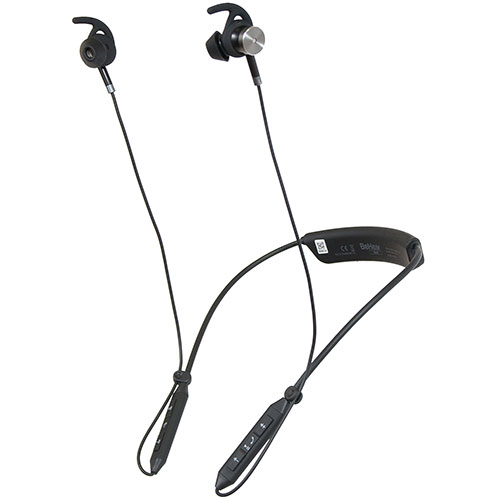
In these cases, you may be interested in trying BeHear NOW. This assistive hearing headset is not a medical device. Instead, it uses advanced sound processing technology, housed in a Bluetooth stereo headset, to enhance what you hear — whether it be live conversations, dialogue on the television, mobile phone calls — when you need it.
So, how do you know if a BeHear hearing amplifier would be right for you? We encourage you to try BeHear for yourself. We have a 30-day return policy, so if you’re not satisfied you simply return the product and get your money back.
What to Do Now
Go to our on-line shop and purchase a BeHear headset. Once you receive it you should go to the Google Play Store (for Android phones, version 4.4 and up) or the Apple Store (for iOS, version 9 and up) and download the free “W&H BeHear” app. You’ll use this app to pair your phone to the headset, and input the values from your audiogram (in the “Personal Info” section of the app). Once you finish, the headset will be updated automatically with custom parameters reflecting your hearing levels for the three hearing modes (ambient hearing, Bluetooth audio, and mobile phone calls). You can further customize the hearing presets (Indoor, Outdoor, Crowd and Live Music) in real-time using the app. View our library of “How to…” videos to learn how to use the headset.
If you’re still unsure…
We invite you to send us your audiogram and we will help determine if the BeHear hearing amplifier might be able to enhance your hearing.
Better Hearing is Now Within Reach – Part 3
This is the final installment of a 3-part series. If you haven’t yet read the earlier installments, you can read the first part here and the second part here.
How is this Concept Different from the Conventional Solutions?
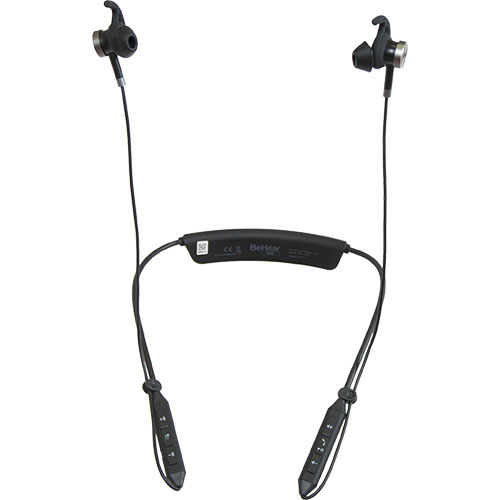
Our first personal hearing product, released commercially in the Fall of 2018, is called BeHear® NOW. It is a stylish, comfortable, high-quality Bluetooth stereo neckband style headset that can be used to listen to music or make phone calls. In addition, it can be used to enhance ambient hearing, very similar to or better than hearing aids. Its retail price of $249 ( €249) makes it very attractive to a wide population.
What About Sound Quality?
BeHear NOW has four microphones, two in the earpieces and two in the control boxes. Using four microphones enables unprecedented sound quality for both ambient hearing and voice communication. The headset features two 13mm hi-fi speakers delivering uncompromised sound. It includes a large rechargeable battery allowing the wearer to use its ambient hearing amplification during an entire day without recharging.
The Difference is in the Sound Enhancing Software
BeHear NOW can be used as a standalone hearing amplifier, but its true value comes with its software. It pairs with a dedicated, free smartphone application called W&H BeHear for iPhones and Android that enables full control and self-adjustment of the headset. When the personal hearing mode is activated, the wearer can choose the most suitable preset (Indoors, Outdoors, Crowd or Live Music). S/He can change noise reduction settings from low to maximum depending on the environment.
Fine Tune the Device on Your Own
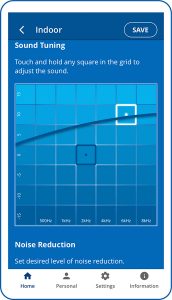
One of the problems with hearing aids today is that they require professional fitting in an audiologist’s office. Given the large number of people who suffer from hearing loss worldwide, it should be apparent that there are not enough audiologists on earth to provide hearing aids to everyone who needs one, especially in rural, distant areas. With BeHear NOW that is not an issue. Wearers can modify the spectrum of the sound they hear in real time by moving their finger on a grid to locate what we call the Best Sound Point. The Best Sound Point is a highly personal definition, depending on the wearer’s preferences, capabilities, and current location!
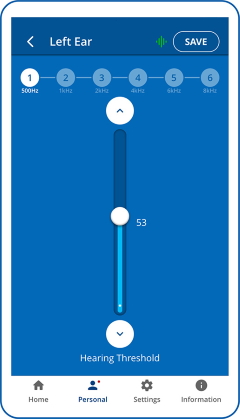
Furthermore, the W&H BeHear application contains a simple hearing assessment that anyone can perform and get immediate results. This is not a medical procedure, of course, but when completed, all BeHear NOW sounds will be modified to fit the wearer’s own personal hearing profile.
Advantages That People With Normal Hearing Will Also Appreciate
BeHear NOW also includes some advanced features that may be useful for people with normal hearing as well. For example, many people have trouble with fast speech. We all prefer that the other person speak slower when we need to write down a phone number, understand a foreign language, or are otherwise being distracted. BeHear NOW can do it automatically. When BeHear NOW is used to make or take a phone call, the wearer can activate a special mode called EasyListen™ to slow down speech and improve understanding. While listening to music, the wearer can activate ListenThrough™ technology. Nearby human voices, the noise of an approaching car and other important or alarming sounds will pass through while ambient noise will be blocked, allowing him/her to enjoy the music to the fullest.
Use EasyListen on mobile calls to slow down speech and improve understanding. Stay safe and alert, even while using your mobile phone in noisy places.
Great Potential for Improving Quality of Life
The Wear & Hear line of assistive hearing products is highly innovative, leveraging two successful concepts (consumer electronics and sound technology advancements). The resulting solutions have the potential to improve quality of life for millions of people worldwide. As Helen Keller once famously remarked, when asked which sense was more important, vision or hearing: “Blindness cuts us off from things, but deafness cuts us off from people.” We want the world to sound better to all. With the aid of our personal hearing devices, people can reconnect socially, without the stigma or high cost of a medical hearing aid.
What’s Next? Feedback and Market Education
The first members of our Wear & Hear family of personal hearing devices are ready for purchase, here on our Web site, and through our international partner channel. However, the market needs educating. There are about 400 million people with disabling hearing loss who desperately need a solution, but they have no idea that there is a high-quality alternative to hearing aids. Our concept of affordable, stylish, multi-functional hearing enhancement solutions needs to capture the attention of both the hearing impaired and those who can help us bring them to market. Can you help?
